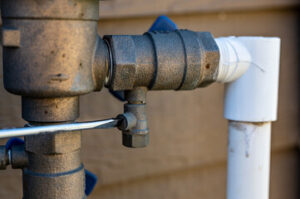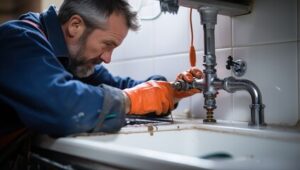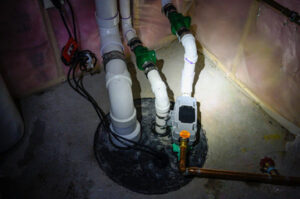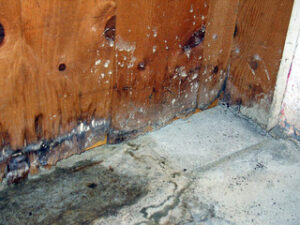Slab leaks are often caused by water pipes that run through your home’s slab foundation. These pipes are used to supply hot and cold water to the plumbing fixtures in your house. They also provide water to the lawn and other outdoor areas.
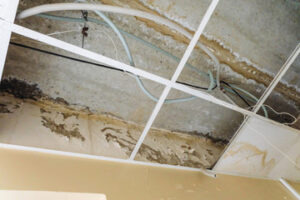
The pipes can develop leaks due to shifts in the soil underneath the house. They can also get damaged by aging. Visit Website for more information.
Savvy homeowners with a do-it-yourself attitude can handle many minor plumbing problems. It’s not hard to change a leaky faucet or replace the fill valve on a toilet, for example. But there are some plumbing problems that can only be solved by a professional plumber. One of those is a slab leak, which occurs in hot or cold water pipes that are buried under the concrete foundation of a house or commercial building. Slab leaks can go years without being detected, and they can cause major damage to the structure of the home or business. The faster a slab leak is detected, the less it can damage the property and reduce the cost of repairs.
Slab leaks are caused by corrosion of the pipes, soil erosion or earthquakes. They also can be caused by a build-up of mineral deposits in the water or by changes in the chemistry of the water. The water chemistry issue is especially problematic because it can cause imbalances that corrode pipes over time. These imbalances can be caused by excessively acidic or alkaline water, the types of pipe material used to construct the pipes, and the type of soil and concrete where the pipes are installed.
Some of the most common symptoms of a slab leak include:
A decrease in water pressure is probably the first sign that you have a slab leak. Less water pressure in the home or business can affect the ability to use sinks, bathtubs and other appliances. It can also make the home feel drafty.
Another common symptom of a slab leak is visible water puddles outside the home on a dry day. The puddles can form near the water lines, or they may appear in other places in the home where there is moisture, such as under sinks, between tiles and in kitchens. Moisture in these areas can promote mildew and mold growth, and it may even cause structural damage to the home or business.
If the leak isn’t repaired right away, it can lead to serious problems such as a cracked foundation, cracks in walls, bad odors, and reduced water pressure. The cost of repairing the damage can run into the tens of thousands of dollars or more. A plumber can reroute the water lines to fix the problem, but that can be costly and disruptive to the home or business. The other option is to break out the slab and replace the pipes, which requires jackhammering the concrete floor and can be expensive, messy and labor intensive.
Finding the source of the leak
Slab leaks are a serious problem that requires professional help to detect and repair. A reputable plumber will use a combination of visual inspections, acoustic detection devices, infrared cameras, thermal imaging, pressure testing, and, if necessary, slab penetration to find the source of the leak. This method allows the plumber to locate the location of the leak quickly and accurately, which minimizes damage and the cost of the repair project.
A slab leak can cause many issues in a home, including unexplained water pooling, soaked carpets, reduced water pressure, and high utility bills. The damage from a slab leak is likely to worsen the longer it goes untreated. This is why it is essential to address any issue with a slab leak as soon as possible.
One of the most obvious signs that there is a slab leak in your home is an unexplained spike in your water bill. While it is normal for water bills to go up during the summer when you are using more water than usual, a sudden increase in your bill can indicate that there is a slab leak.
Another way to identify a slab leak is by noticing hot or warm spots on the floor above your foundation. These areas typically align with the path of the leaking water lines. A leaking hot water line can also cause the area around your water heater to become damp or stained.
If you notice these or other unexplained problems in your home, it is essential to call a plumber right away. Slab leaks can lead to expensive problems that will only get worse if they are not repaired immediately.
Once the plumber has identified the source of the slab leak, he will need to repair it. This can be a simple task, or it may involve re-piping your whole home. Plumbers often choose to repipe homes with copper, CPVC, or PEX pipes, as these are more durable options than the traditional galvanized steel pipes used in many older homes. The new piping will be installed above-ground or in the attic, depending on the type of plumbing system you have and your home’s needs.
Repairing the leak
Slab leaks can damage a home’s foundation and cause mildew and mold problems. They can also increase water bills. It is important to recognize the warning signs of a slab leak and call in a professional plumber right away. The sooner you find and treat the leak, the less expensive it will be. Some of the warning signs include hearing running water even when all your faucets are turned off, seeing your water meter spinning when there is no water use, and experiencing high water bills.
Most slab leaks are caused by corrosion or abrasion. Hot water pipes are particularly vulnerable to abrasion, as they expand and contract with the rise and fall of temperature. During installation, pipes are often dented, which causes water to rub against the pipe and wear it down over time. Slab leaks can also be caused by external pressure from things like earthquakes, soil erosion, or ground shifts.
Once a plumber has found the source of the leak, they will then decide how to repair it. There are several options, including jackhammering through the concrete to access the pipe, digging tunnels under the house, or rerouting the water line. Re-routing is the best option because it eliminates the leaking section and prevents future leaks. However, it is costly and difficult to do, and requires expert knowledge of plumbing systems and house construction.
Another option is to spot repair the leak through the concrete. This method is cheap, but it can be very disruptive inside the house. The plumber will use a jackhammer to break through the floor and concrete, which can lead to a lot of mess. It is also only a temporary solution because the leak will likely return.
If you choose to reroute the water line, a plumber will remove the old line and run a new copper line from Point A to Point B. This process is less expensive than other options, but it may take longer to complete because of the complex plumbing involved. It is a good idea to hire an experienced plumber for this task, as they will have the tools and equipment necessary to do the job quickly and efficiently.
Insurance claims
Slab leaks can cause significant damage to homes, and this damage can lead to expensive repairs. Whether these costs are covered by homeowners insurance depends on the specifics of each individual policy. Homeowners insurance policies usually cover the structural damage caused by a slab leak in cases where the damage is the result of a covered peril. This includes events such as natural disasters and other acts of nature. Homeowners insurance also covers the costs of repairing and replacing personal property that is damaged by a slab leak. This includes items such as furniture, appliances, clothing and electronics.
However, many insurance companies have a difficult time dealing with these kinds of claims. Slab leaks are often difficult to detect, and they can go unnoticed for an extended period of time. This makes it difficult for them to assess the extent of the damage.
When a slab leak is detected, it’s important to document the damage right away. This can include a picture of the affected area, as well as a detailed description of what has been lost or destroyed. You should also make note of when the damage occurred, whether it was gradual or sudden. Finally, you should contact a professional plumber to inspect the damage and determine the source of the slab leak.
If your claim is denied, there are several steps you can take to get it approved. You can request that the denial be reviewed by a different adjuster or supervisor, or you can engage a public adjuster to conduct an independent assessment of the damage and cost of repair. You may also want to consult with an attorney who specializes in insurance matters, especially if the damage is substantial.
Ultimately, the best way to protect yourself against a slab leak is by staying on top of routine maintenance and getting your foundation inspected every 3-4 years. This will allow you to spot warning signs early and address them before they become a major problem that requires costly repairs. This can save you a lot of headaches, as well as money.
